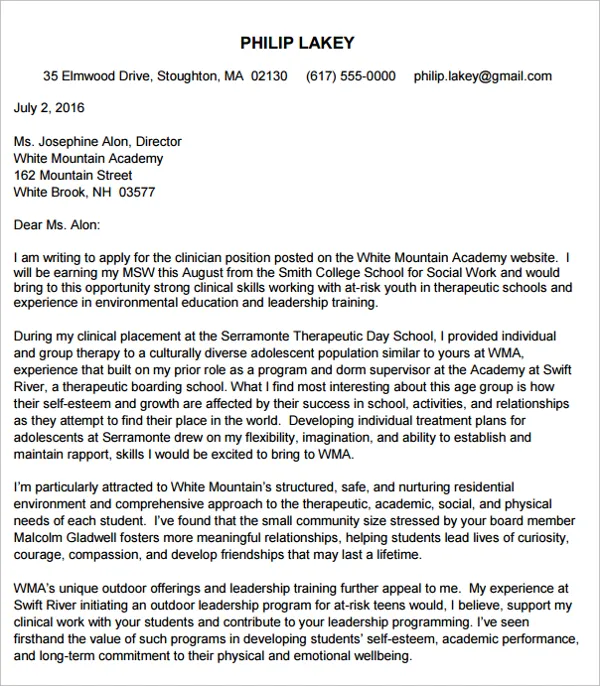Understanding the Social Service Job Market
The social service job market is dynamic, with diverse roles and requirements. Before you start writing your cover letter, understand the current landscape. Research the types of organizations hiring such as non-profits, government agencies, and private practices, each with unique needs and values. Analyze job descriptions to identify common requirements and preferred qualifications. This understanding will help you tailor your cover letter to resonate with specific employers. Keep up-to-date with industry trends by reading professional journals, attending webinars, and following social service organizations on social media. Understanding the social service job market also requires an awareness of the issues faced by the people served.
Researching Potential Employers
Thorough research is essential for a compelling cover letter. Visit the potential employer’s website to gain insights into their mission, values, and the specific programs they offer. Explore their “About Us” section, read their annual reports, and review their social media presence. This research will allow you to highlight the skills and experiences relevant to the specific organization. Identify key individuals or departments. Knowing what they value helps you connect with them on a deeper level. Customize your cover letter to address their specific needs and goals. Mention specific programs or initiatives that you find inspiring, and explain how your skills can contribute to their success. This attention to detail showcases your genuine interest and increases your chances of being selected.
Tailoring Your Cover Letter
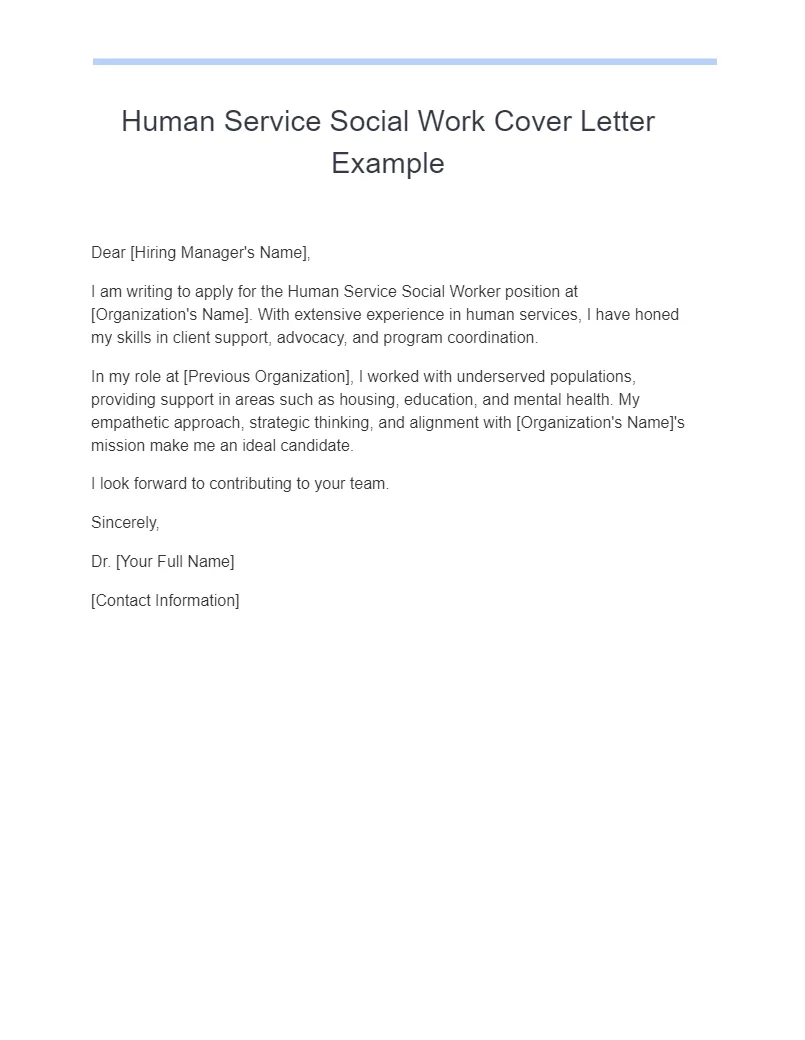
A generic cover letter rarely makes a positive impression. Each cover letter should be tailored to the specific job and employer. Review the job description carefully, and align your skills and experiences with the stated requirements. Use the same language and keywords as the job description. Showcasing your understanding of the organization’s needs and goals will create a personalized touch. Avoid using a template without significant modifications. Highlight your understanding of the organization’s mission. Show how your goals align with their work. Tailoring shows you’re interested. Explain how you will benefit the organization. Be clear about why you are applying and why you’re the best fit for the position. Show genuine enthusiasm for the opportunity and the chance to contribute to the employer’s mission.
Highlighting Relevant Skills and Experience
Social service roles require a unique combination of skills. Include these skills in your cover letter. Focus on skills mentioned in the job description. Use the STAR method (Situation, Task, Action, Result) to demonstrate the abilities. Provide specific examples of your achievements and quantify your results. Include both hard and soft skills, for example empathy, active listening, and communication skills. Make sure that you include relevant experience. Detail your accomplishments, not just your job responsibilities. Mention any specific training, certifications, or specializations. Showcasing practical skills will make a significant impact on the hiring manager. Tailor the skills and experience to suit each job application. Highlighting the most relevant qualifications will significantly increase your chances of being selected.
Emphasizing Your Passion for Social Service
A cover letter is a chance to express your passion for social service. Share your motivations. Explain why you are committed to helping others. Reflect on what inspires your commitment to the field. Discuss your values. Demonstrate how these values align with the mission of the organization. Share a personal story that showcases your commitment to social service, such as a volunteer experience or a situation where you made a difference. Show your genuine interest in the specific job. This is your opportunity to illustrate why you are the best candidate. Show that you care about the organization’s mission and goals. This will allow the hiring manager to see you as more than just a qualified candidate.
Crafting a Strong Opening Statement
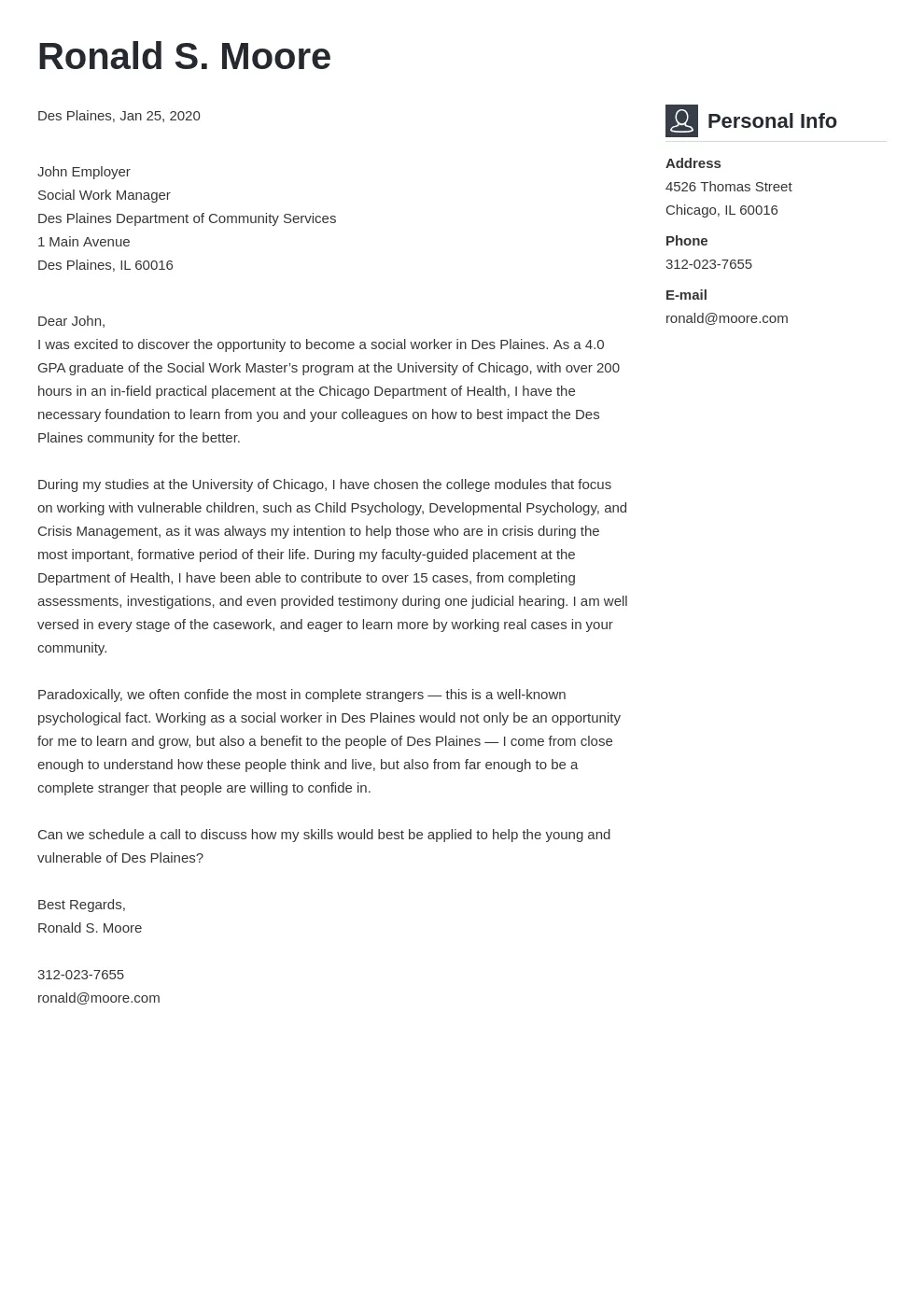
The opening of your cover letter sets the tone for the rest of your application. Start with a compelling hook. The opening should grab the reader’s attention. State the position you are applying for and how you learned about it. Briefly mention your relevant skills and experience to show you are a suitable candidate. Express your enthusiasm for the opportunity and the organization. Customize your opening. Avoid generic phrases. Tailor your opening to the specific job and organization. Make a positive impression. Showing genuine interest and passion will get the reader’s attention. Show confidence in your abilities and the value you can bring. A well-crafted opening will make the hiring manager want to keep reading.
Structuring Your Cover Letter for Impact
Organize your cover letter logically. Use a clear structure. Include an opening, body paragraphs, and a closing. Use concise paragraphs and clear headings. Make your cover letter easy to read. The body paragraphs should focus on your key qualifications. Show how your skills and experience align with the job requirements. Use examples and provide details to support your claims. Keep it concise and to the point. Avoid lengthy paragraphs. Highlight the most relevant information. Ensure that you use a professional tone. Maintain a positive and enthusiastic attitude. Proofread your cover letter carefully before sending it. Formatting matters. A well-structured cover letter will make a great impression.
Showcasing Your Achievements and Accomplishments
Demonstrate your value to the employer. Don’t just list your responsibilities. Show your accomplishments. Use the STAR method to describe specific situations. Provide the tasks you undertook, your actions, and the positive results. Quantify your achievements. Use numbers to illustrate your impact, such as the number of clients served or the percentage of improvement. Showcase the impact of your work. Focus on results. Show how your actions benefited the organization or the clients. Mention any awards, recognition, or positive feedback you have received. Provide specific examples of your accomplishments. Highlight the most relevant achievements. Show that you are a results-driven individual. This will demonstrate the value you can bring.
Demonstrating Cultural Competency and Sensitivity
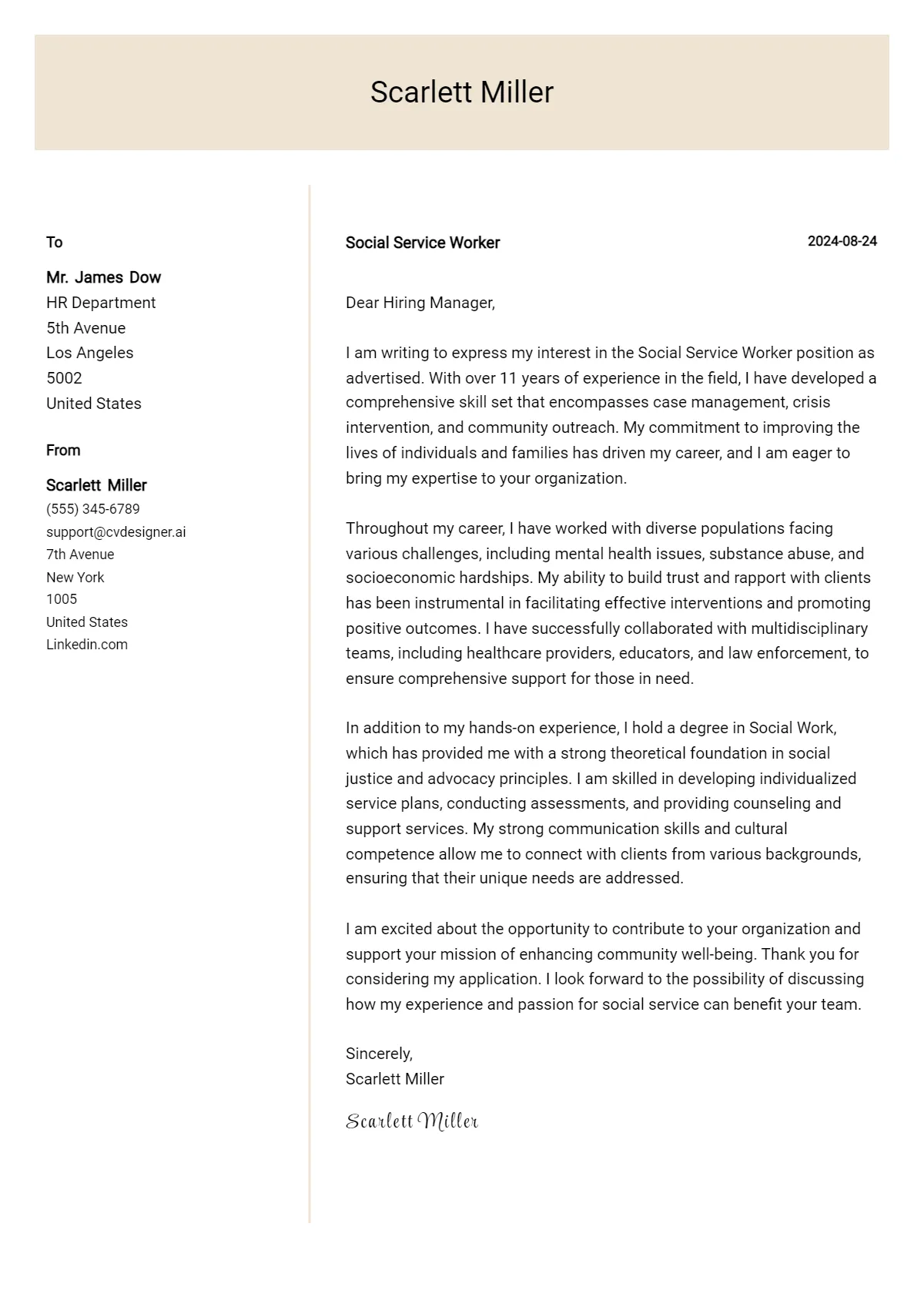
Show your understanding of cultural differences. The social service field requires cultural competency. Be aware of different cultures, backgrounds, and perspectives. Discuss your experience working with diverse populations. Highlight your ability to build rapport with clients from different backgrounds. Emphasize your commitment to providing equitable services. Mention any relevant training or certifications. Show sensitivity in your language. Use inclusive language. Avoid jargon and stereotypes. Demonstrate your respect for cultural differences. Show your ability to work collaboratively with a diverse team. Your understanding is very important. Emphasize your ability to show sensitivity in your language, which is critical in social services.
Writing a Compelling Closing
Your closing should leave a lasting impression. Thank the reader for their time and consideration. Reiterate your interest in the position and the organization. Briefly summarize your key qualifications and why you are a good fit. Express your eagerness to discuss your application further. Include a call to action, such as inviting them to contact you for an interview. Provide your contact information, including your phone number and email address. Proofread your closing to avoid errors. Maintain a professional tone and keep the closing brief and to the point. End with a strong statement. A good closing can increase your chances of getting a job offer.
Proofreading and Editing Your Cover Letter
Proofread for grammatical errors. This is an important step. Typos and grammatical errors can damage your credibility. Check your spelling. Use a spell checker to avoid mistakes. Review your punctuation. Ensure your sentences flow well. Read the letter aloud to catch awkward phrasing. Ask someone else to review your cover letter for feedback. Make sure that your cover letter is clear, concise, and easy to read. Revise and edit as needed. Make necessary changes to improve clarity. A polished cover letter will give a professional impression.
Formatting Your Cover Letter
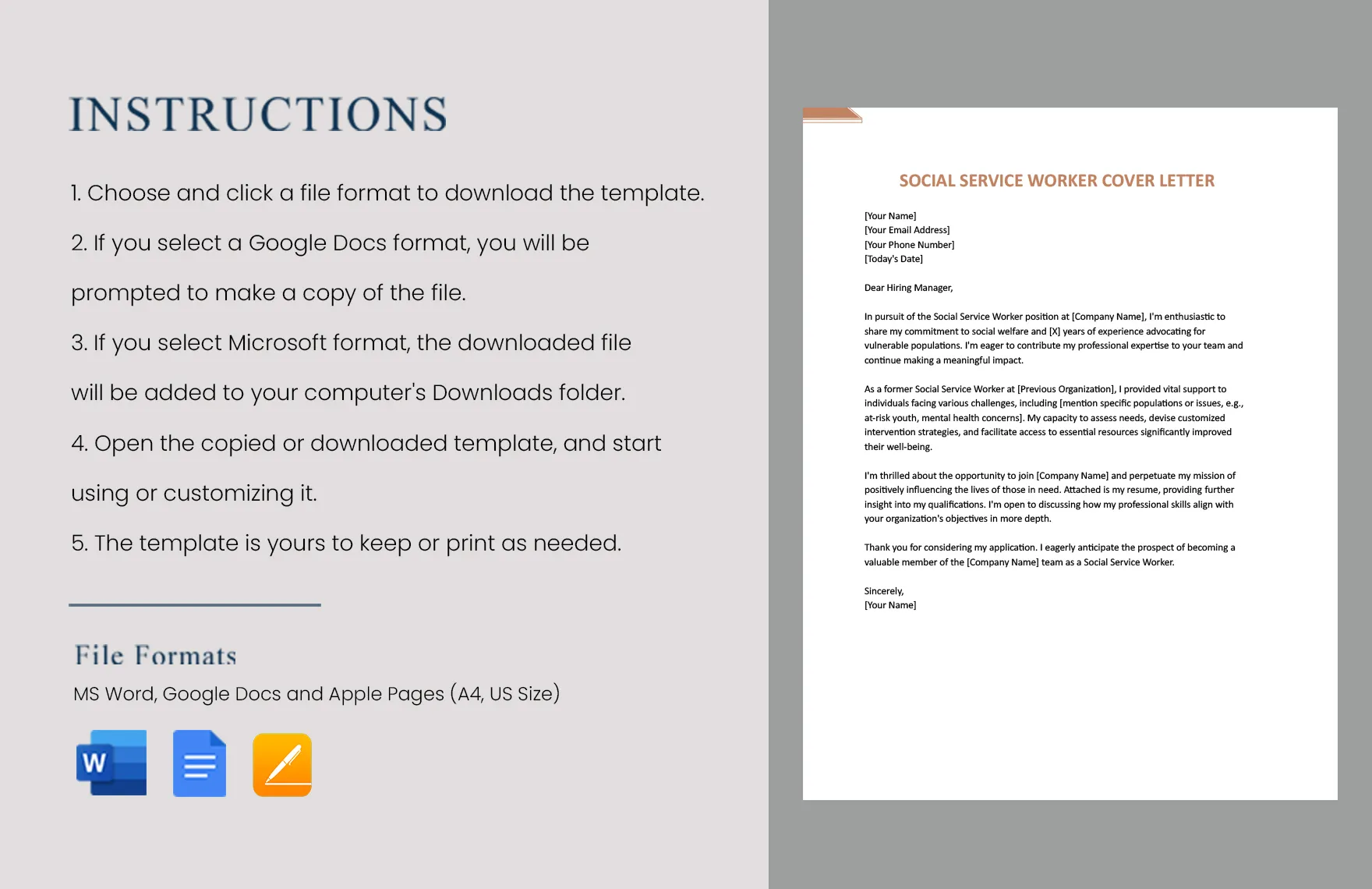
Ensure your cover letter looks professional. Use a standard font such as Times New Roman or Arial. Use a font size of 11 or 12 points. Maintain consistent formatting. Use a simple layout. Keep the margins at one inch on all sides. Use single-space paragraphs with a space between each paragraph. Use a professional heading. Include your name, address, phone number, and email address. Include the date and the hiring manager’s name and title. Proofread the formatting. Ensure your formatting is consistent. This will help you make a good impression. A well-formatted cover letter is important. It shows attention to detail.
In conclusion, writing a standout cover letter for social service jobs requires careful planning, customization, and attention to detail. By following these 5 tips, you can create a cover letter that effectively highlights your skills, experiences, and passion. Remember to research the job market and employers. Tailor your cover letter to each position. Emphasize your passion for social service, and showcase your achievements. Proofread and edit carefully for a polished final product. Good luck with your job search!
